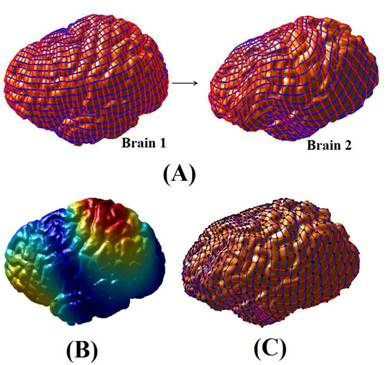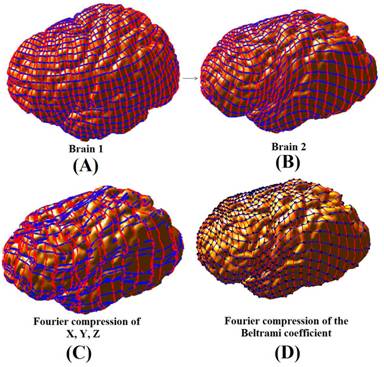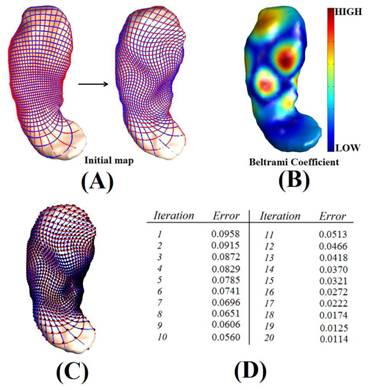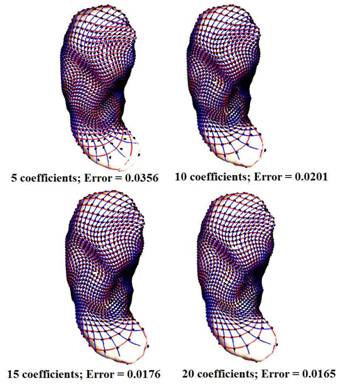Compression
of Surface Registration using Beltrami coefficients
Project Description:
Surface registration is widely used in machine vision and medical
imaging, where 1-1 correspondences between surfaces are computed to study
their variations. Surface maps are usually stored as the 3D coordinates each
vertex is mapped to, which often requires lots of storage memory. This causes
inconvenience in data transmission and data storage, especially when a large
set of surfaces are analyzed.
To tackle this problem, we propose a novel representation of surface diffeomorphisms
using Beltrami coefficients which are complex-valued functions defined on
surfaces with supreme norm less than 1. Fixing any 3 points on a pair of
surfaces, there is a 1-1 correspondence between the set of surface diffeomorphisms
between them and the set of Beltrami coefficients on the source domain. Hence,
every
bijective surface map can be represented by a unique Beltrami coefficient.
Conversely, given a Beltrami coefficient, we can reconstruct the unique surface
map associated to it using the Beltrami Holomorphic flow (BHF) method introduced
in this paper. Using this representation, 1/3 of the storage space is saved.
We can further reduce the storage requirement by 90% by compressing the
Beltrami coefficients using Fourier approximations. We test our algorithm
on synthetic data, real human brain and hippocampal surfaces. Our results
show high accuracy in the reconstructed data, while the amount of storage
is greatly reduced. Our
approach is compared with the Fourier compression of the coordinate functions
using the same amount of data. The latter approach often shows jaggy results
and cannot guarantee to preserve diffeomorphisms.
Publication:
- Lok Ming Lui, Tsz Wai Wong, Xianfeng Gu, Tony Chan and Shing-Tung Yau, Compression of Surface Registration using Beltrami coefficient, Computer Vision and Pattern Recognition (CVPR 2010), in press
Result:



